Discover the joy of chess with step-by-step instructions on how to Play Chess, perfect for beginners of all ages.

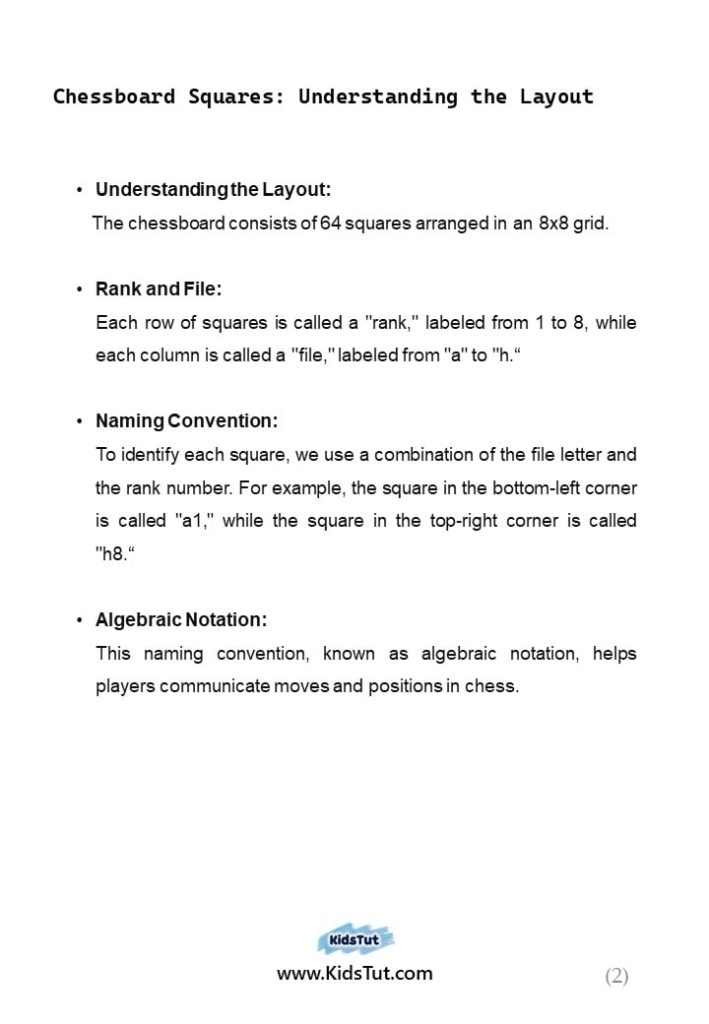

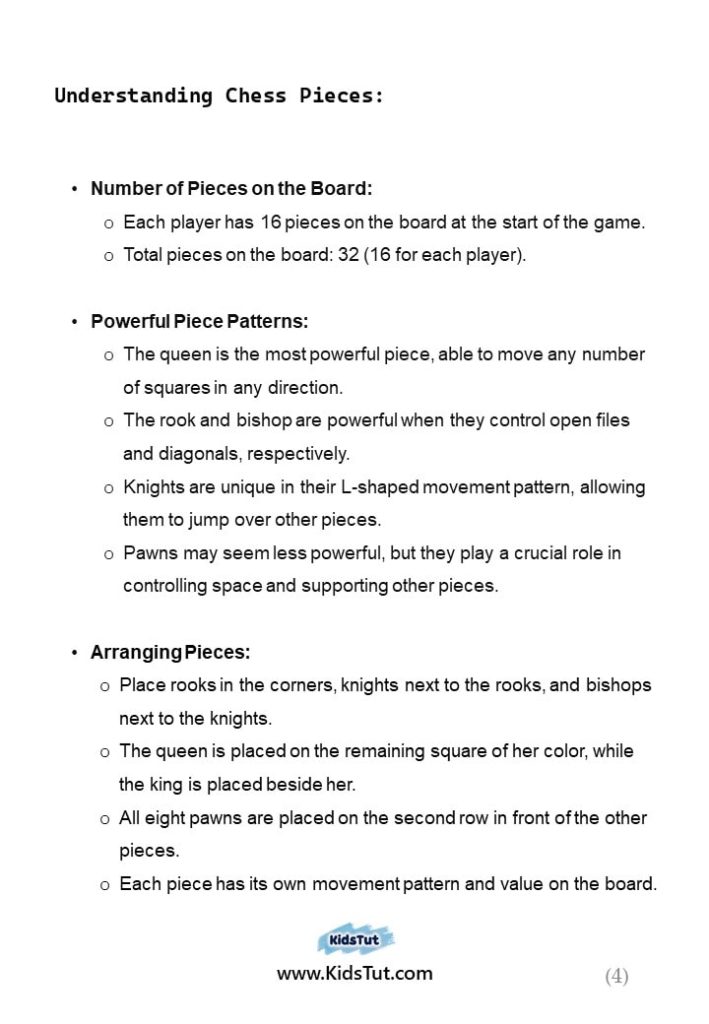
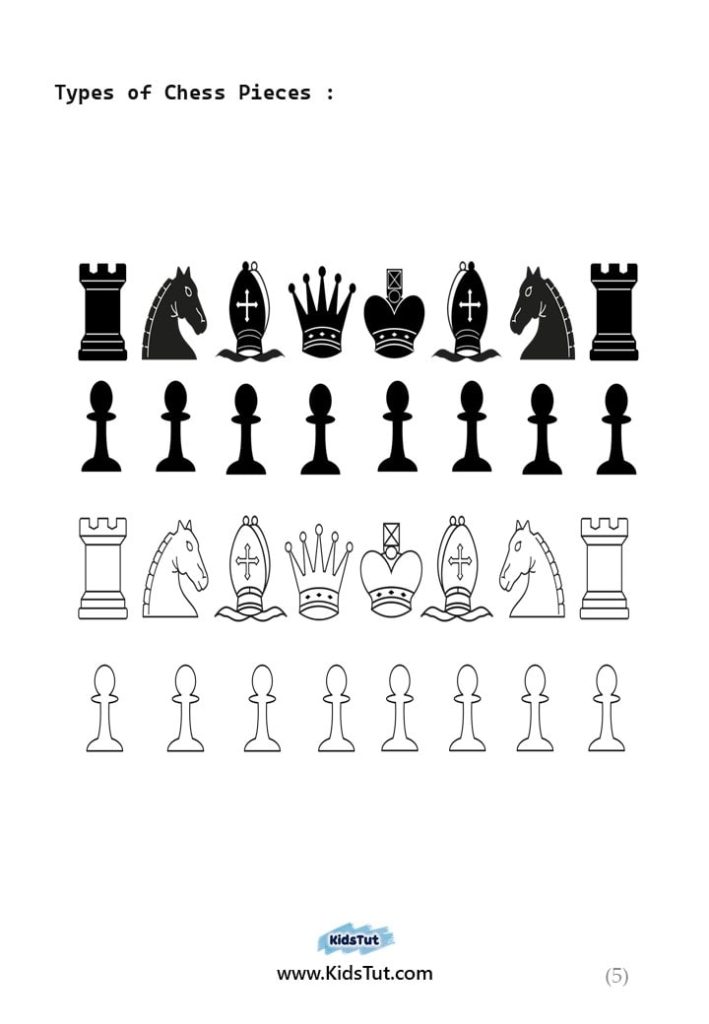
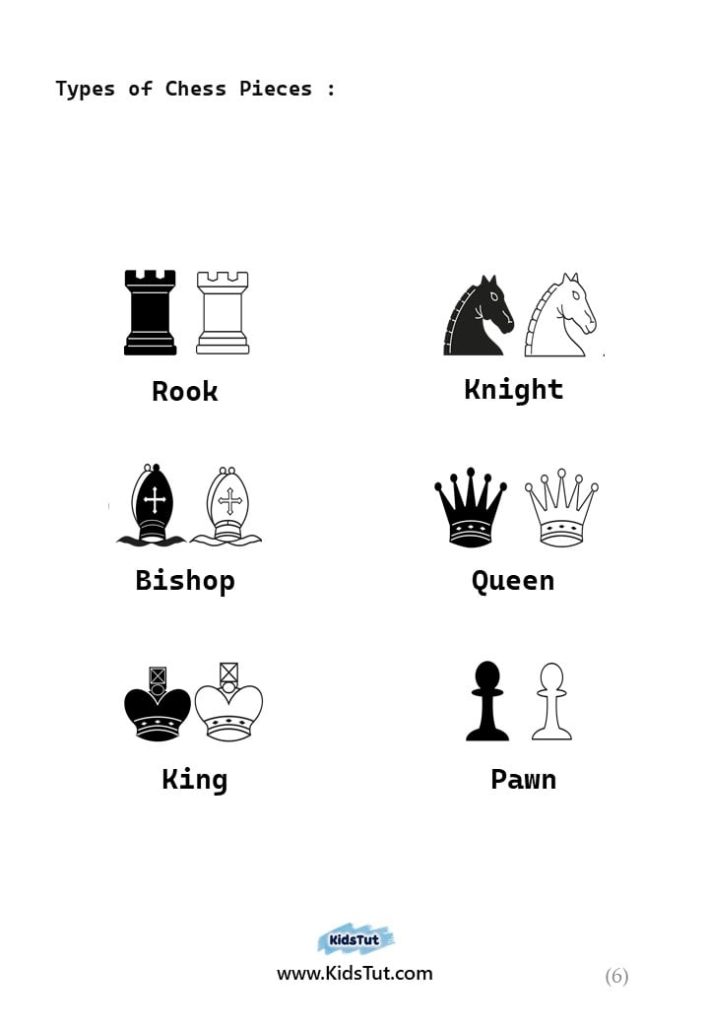
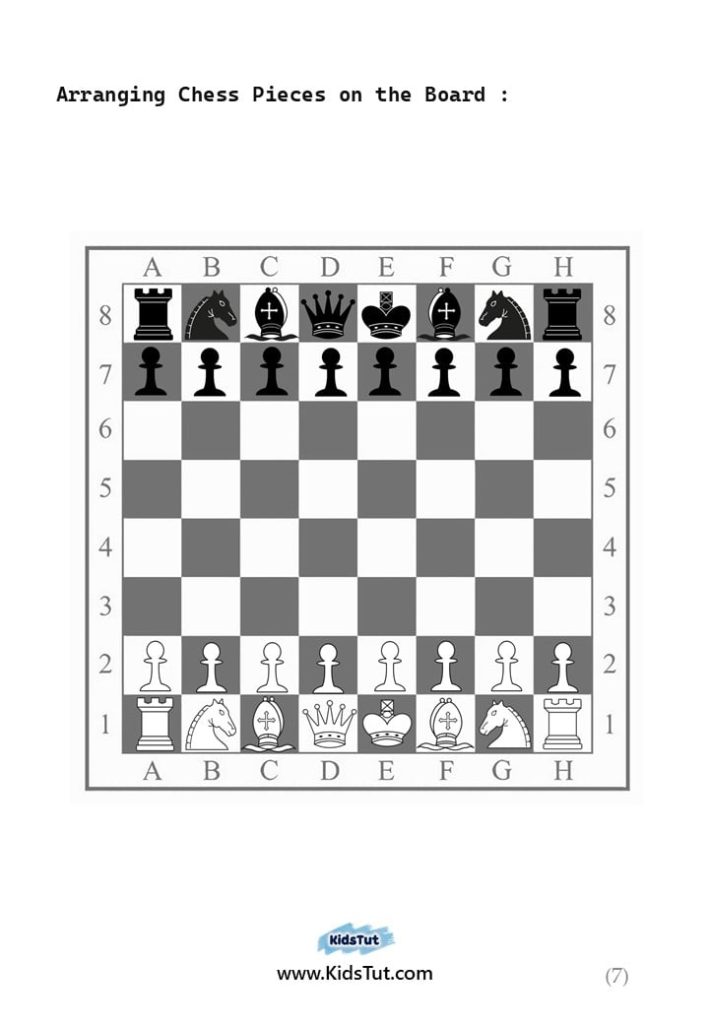
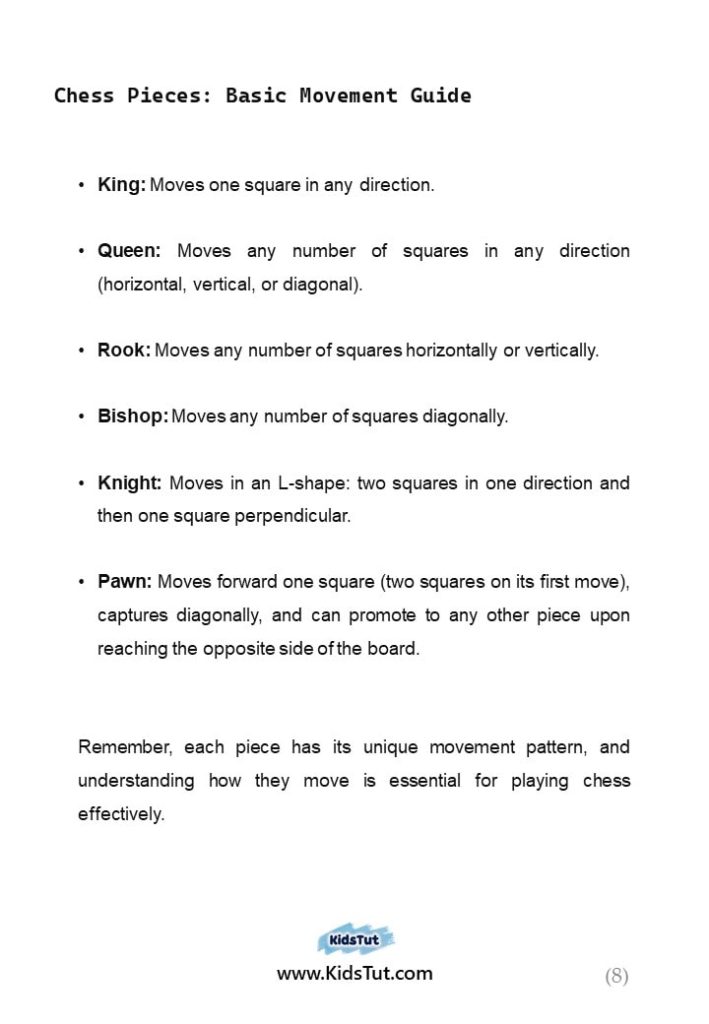
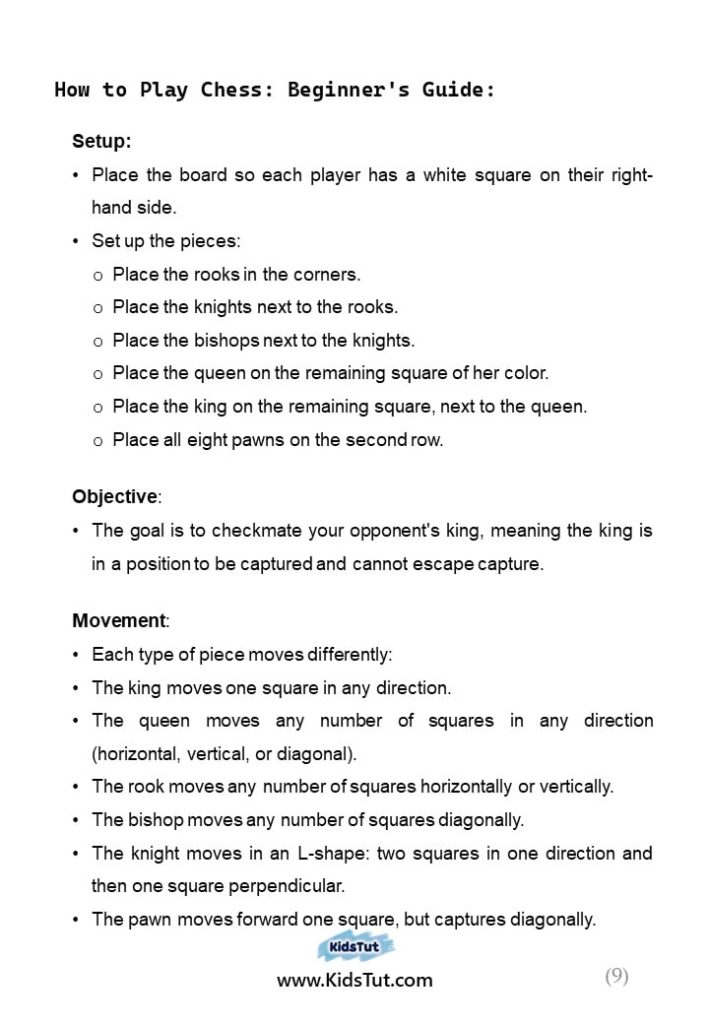
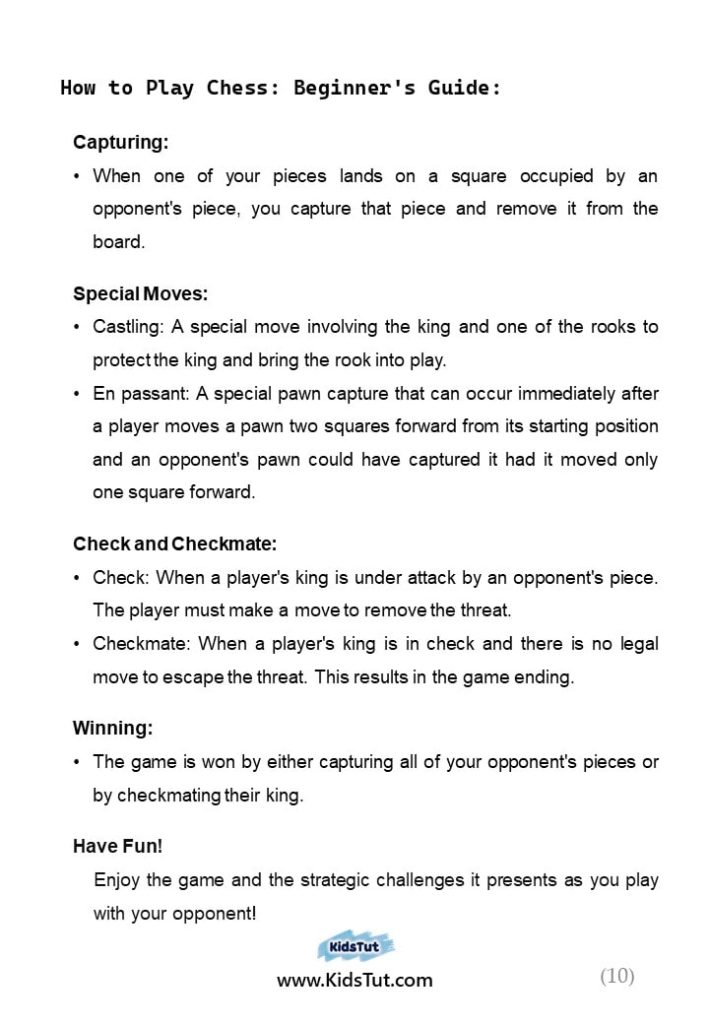
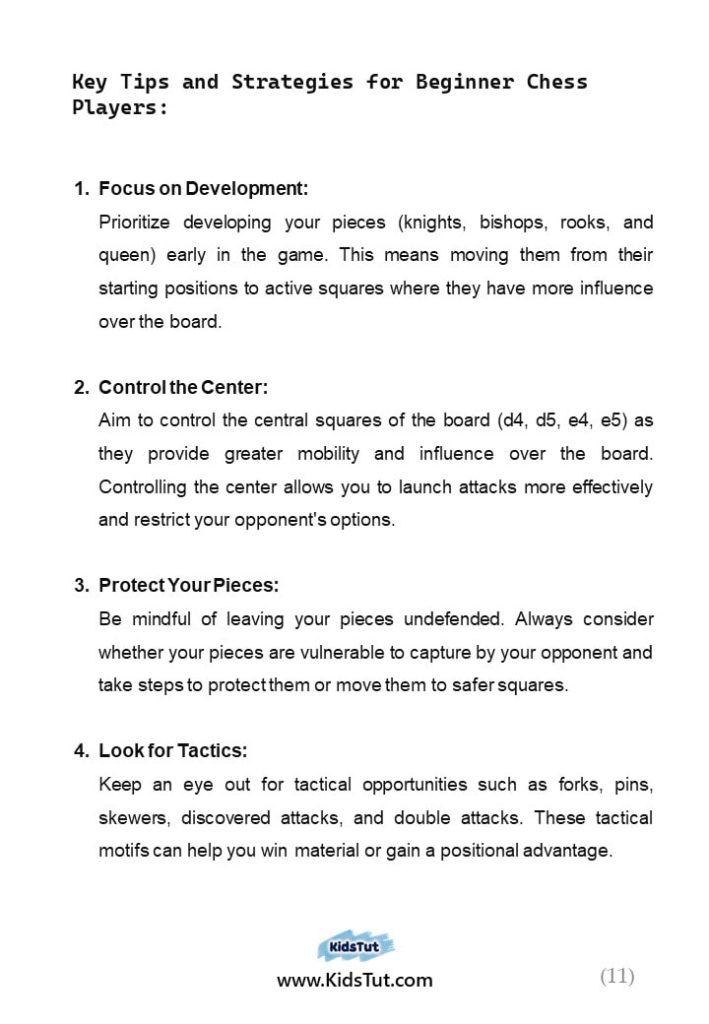
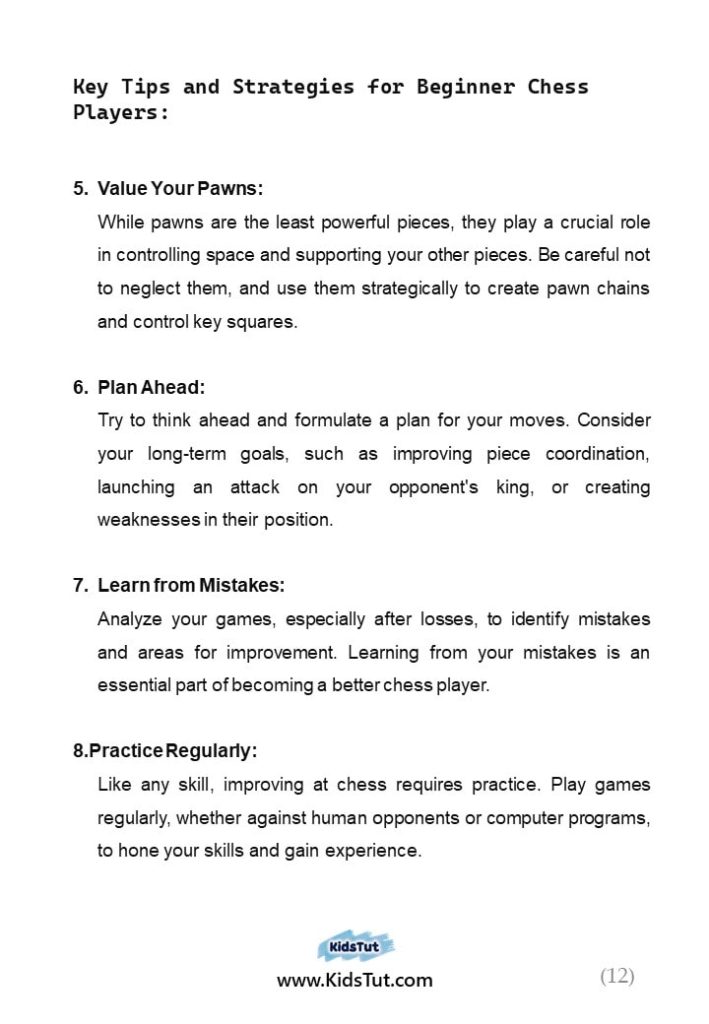

*** You have the option to download the PDF file from this location.- Download
Explore more game instructions for Kids!
Free Printable Snake and Ladder Game Board Templates! – See More
Mastering Checkers: Rules, Strategies, and Tips for Success – See More
Free Ludo Game Board Templates & Instructions – See More
***
Chess Lessons for Kids
History of the Chess game: The game of chess, originally known as “Chaturanga,” was invented in India around the eighth century. Over time, it spread to regions including the Arab world, Persia, and medieval Europe, where it underwent various modifications. Medieval Europeans notably adapted the game’s rules, stakes, and appearance, evolving it to reflect aspects of their own culture, eventually resembling the courtly life of England.
The age range of the chess players: Chess is a wonderful game that can be played by children of any age. But it is a game that can be thought of as quite difficult for beginners. It can be played very easily with experience. Although it is difficult for young children to understand the strategies required to play chess, it is important to practice from an early age.
Chess players: Chess is played between two players who take turns moving the pieces on the chessboard. The objective of the game is to checkmate the opponent’s king, strategically maneuvering the pieces while adhering to the rules of the game.
The Chess Board: A chessboard is typically made of materials such as wood or plastic. It is square-shaped with all four sides equal in length. The horizontal side is labeled from A to H It is named “file”, and the vertical side is from 1 to 8. It’s named “rank.” This naming convention is used to identify the individual squares on the board, resulting in a total of 64 squares.
These squares are alternately colored black and white, creating the distinctive checkered pattern of a chessboard. These 64 small squares are respectively name as, A1, A2, A3, A4, A5, A6, A7, A8, B1, B2, B3, B4, B5, B6, B7, B8, C1, C2, C3, C4, C5, C6, C7, C8, D1, D2, D3, D4, D5, D6, D7, D8, E1, E2, E3, E4, E5, E6, E7, E8, F1, F2, F3, F4, F5, F6, F7, F8, G1, G2, G3, G4, G5, G6, G7, G8, H1, H2, H3, H4, H5, H6, H7, H8.
Chess pieces: A total of 32 pieces of two colors are used in this game, with each player having 16 pieces. The pieces are divided equally between black and white. Among the 16 pieces, 8 pieces have the same shape and are placed in the front row on the board; these are called pawns. The remaining 8 pieces have different shapes and are called by different names: Rook, Knight, Bishop, Queen, and King. The back row consists of two rooks, two knights, two bishops, and one king and queen for each player.
This game also has a set of rules to handle these pieces. That is, each pawn has its unique moment pattern. Examples for: King: Moves one square in any direction, Queen: Moves any number of squares in any direction (horizontal, vertical, or diagonal)., Rook: Moves any number of squares horizontally or vertically., Bishop: Moves any number of squares diagonally., Knight: Moves in an L-shape: two squares in one direction and then one square perpendicular., Pawn: Moves forward one square (two squares on its first move), captures diagonally, and can promote to any other piece upon reaching the opposite side of the board.
From this learning page, if you are a beginner, you can gain a lot of chess knowledge. Instructions for that are provided to you from the beginning in writing and in pictures. The game of chess is fun, calms the minds of children, and helps in intellectual development. 😊
